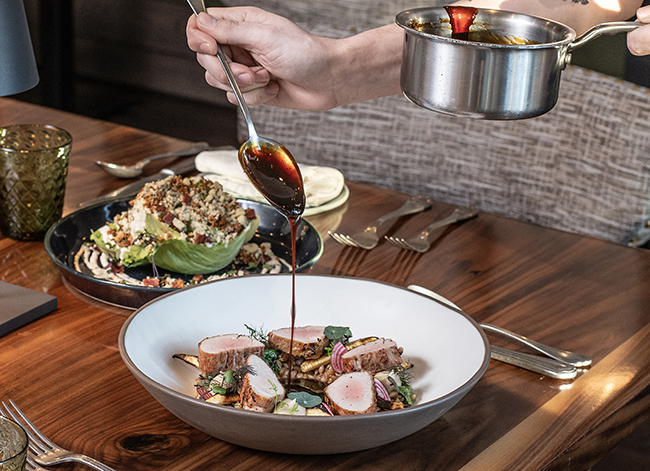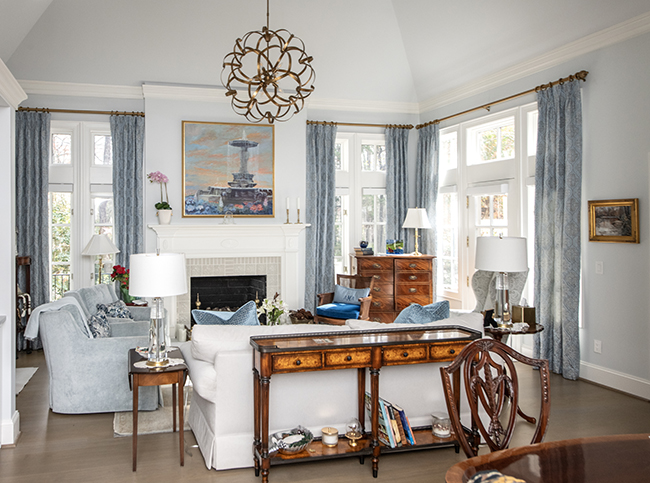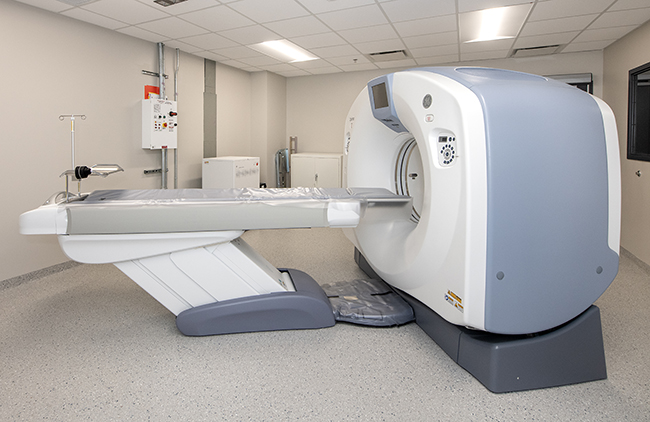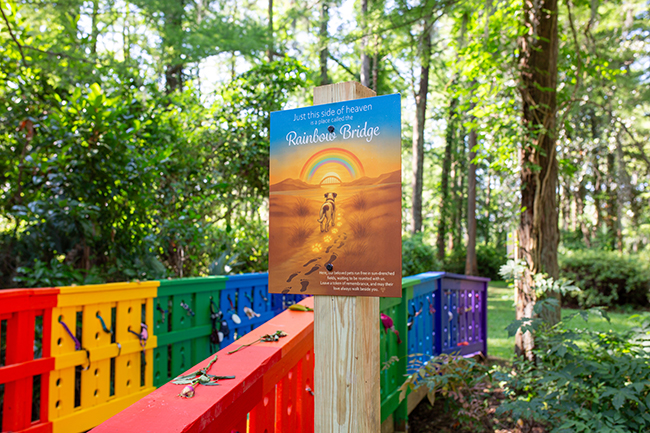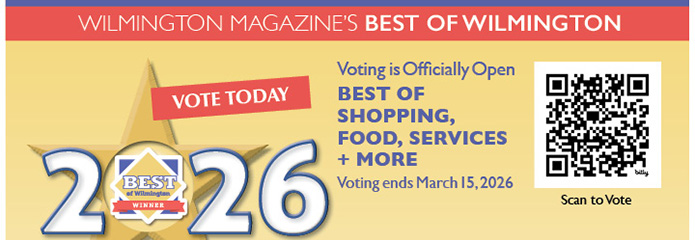In It for the Long Run
03 Jan 2024
A runner’s mission to make ultrarunning more accessible in Wilmington
By Hannah Fell
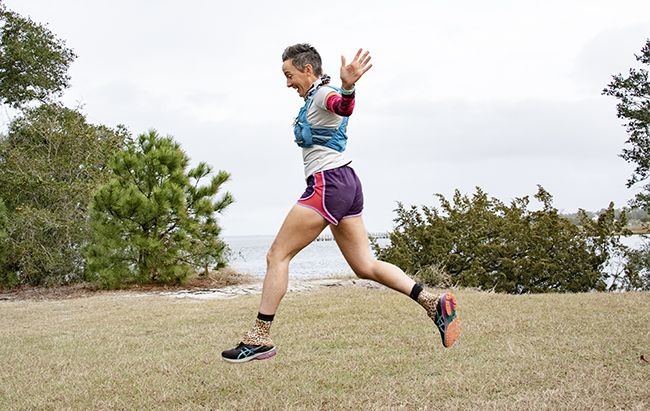
On November 18 at 9am, Karyn Oetting watched 30 runners cross the start line at Carolina Beach State Park for the start of a 16-hour run. It marked the first Punk Rock Ultra Marathon that Oetting and her business partner and spouse, Tony McCarty, planned and hosted in Wilmington, NC.
Here's how it worked: Runners could decide how many times they wanted to circle the 4.5-mile trail within the 16-hour window. When a runner decided they were finished for the day, they could simply stop running. With this type of self-directed race format, Oetting says that no one could DNF (did not finish) the race.
The event was capped at 30 people, and it was open to all runners and all ability levels.
“Our race sold out in 7 hours,” she says. “We had a waiting list that was longer than the participant list.”
Next year, she's hoping they can increase that amount so more people can take place in the race.
From 5k to Ultra
Oetting started running over a decade ago and got into it the same way many people decide to pick up the sport: She wanted to do something better for herself. She signed up for a 5k unsure of how long that actually was (3.1 miles).
“I just knew that the Carolina Beach State Park had a three-mile trail,” she says, “and I figured if I could run that loop, I could complete the 5k.”
She's been a trail runner ever since that race. After skipping the traditional route of jumping to the marathon (26.2 miles) she says she decided to jump to a 50k race (about 31 miles) because it took place on the trails.
Since then, Oetting and McCarty got into ultra-running distances and the community that they provided.
“We did all the trail running, all the ultra-events that were here in Wilmington,” she says, “and then we started going to South Carolina where they have an enormous trail running community.”
In South Carolina, they were able to find races that were inclusive to slower runners who might not be out there to win but have terrible fears of not making the finish line cut-off time.
“We found a whole community of runners who are very accepting of the 'come as you are' part of running that we got into,” she says.
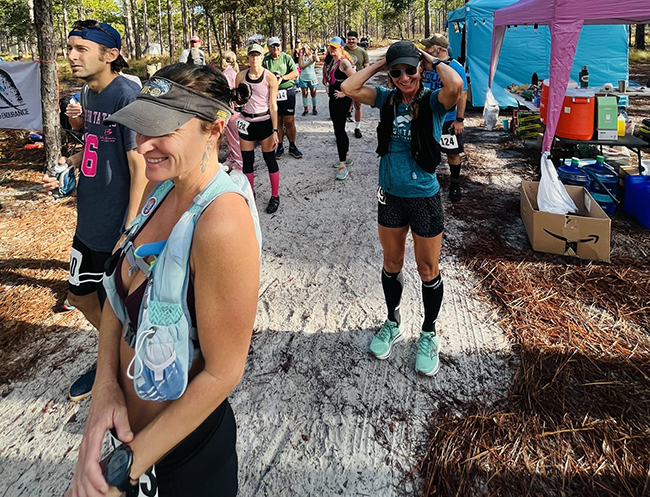
Bringing ultras to Wilmington
Oetting noticed that ultra-running is one of the fastest-growing aspects of the running community, and Wilmington reflects this trend with several ultra-races in the area, all of which
are well-attended.
“Tom Clifford hosts at least one trail ultra-marathon in the Wilmington area,” she says, “and there's the Ultra Running Guys that host ultra-events out in Brunswick Nature Park and a couple of others in the Greater Wilmington area.”
With this community in mind, Oetting says that there are a lot of people here interested in the sport but who might be afraid that they're not fast enough to finish a traditional ultra.
“We wanted to have a race in Wilmington that was the kind of race that we wanted to go to,” she says. They wanted to create a race that had a timed format versus a distance format in the hope of attracting a wide variety of runners, both front-pack and back-of-the-pack runners.
“[With this format] You really will have people pushing the limits of how many miles they can get done in that time that's available,” she says. “Plus, you'll have people there taking advantage of that length of time to perhaps hit what might be a smaller, shorter distance, but to them, it's a big deal.”
Greg Zinner, a participant in the race, pushed himself to see how far he could go. He’s been running since he was young and finished first place in the male category at the Punk Rock Ultra Marathon. He's completed 24 ultra-marathons and has been around the sport of ultra-running for the past 10 years. He says was on the trail for a little over 14.5 hours.
“I ended up running 62.4 miles,” Zinner says, “which constituted 16 times around the course.”
While Oetting wanted to hold the race in the Carolina Beach State Park, she says there were roadblocks that they had to figure out, including having multiple of its superintendents sign off on the permit and convince the park that the race wouldn't negatively impact the grounds during the event.
“It was so much work, but it was so rewarding,” she says. “The day of the race was just amazing. I don't even know how else to describe it. It was amazing to watch people do things that they didn't know they could do.”
Jo Beth Hoke was one of the many runners who accomplished big goals that day. A good friend of hers told her about the Punk Rock Ultra and how it was a no-DNF race. As a back-of-the-pack runner, she knew she had to do it as her first ultra-marathon. She ran 18 miles in about 11 hours.
“The community was accepting, they were inclusive, they cheered everyone on,” she says. “Everyone was so incredible, and they were rooting for me no matter what my plan was, no matter how many miles I ran.”
When Hoke considered ending her race around 8 p.m. because it was getting dark and she was feeling tired, Oetting asked her if she would like someone to run with her. She says she felt so wanted at the race, that her goals mattered to Oetting, and that she was there to support her along the way.
“It was pure encouragement,” she says. “You could see her love for the sport, and I couldn't have asked for a better first experience.”
Emily Lyons, another runner from the race, finished first place in the female category. She did her first ultramarathon in 2016, a 50k (about 31 miles), and then a 100k (about 62 miles) in 2018. She's done ten 100-mile distances and recently completed the Badwater Ultra Cup, which Lyons describes as the Boston Marathon of ultra-running. She ran for about 15 hours and 15 minutes and hung out to watch everyone finish.
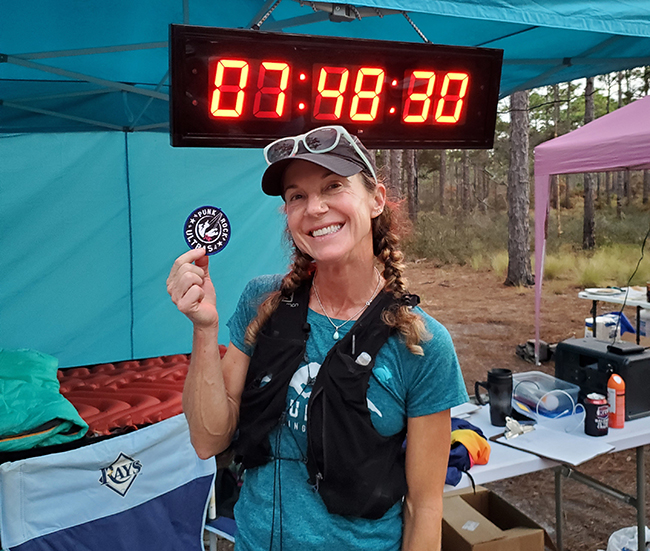
Zinner was also waiting at the finish line with Lyons at 1am to cheer on the last few people who continued for the entire 16 hours. Some finished with about 5 to 10 minutes on the clock.
“We tend to be very supportive of one another,” Zinner says. “There's just very good comradery, and everyone's in it together.”
At 1am, Lyons said there was an informal awards ceremony, and all finishers got a patch that signified the longest distance they went to place on their hydration vest, including half-marathon, marathon, 50k, 50 miles, and 100k patches. The top winners were awarded chain necklaces that look like locks, which were inspired by Sid Vicious from the Sex Pistols, a play on the concept of the race being a 16-hour “lock-in” since everyone was locked in at the park, which closes at 7pm, until the next morning.
“They were really cool, memorable awards,” Lyons says.
After the race, some of the runners camped at the campsite like Hoke, while others, like Zinner and Lyons, decided to sleep in their cars.
The next morning, Zinner, Lyons and a few other runners were talking in the parking lot, and Lyons says that, as they were sleeping, they both were having dreams of trying not to trip on the trail.
“We had just spent 15 hours staring at our feet,” Lyons says. “It was so funny we both had the same dream.”
Oetting says she's looking forward to the next year when all the runners can come together and do it again.
“As runners, we really have a lot in common,” she says. “And the least interesting part about us is how fast or how far we run. What's more interesting are the tales from the trails.”

